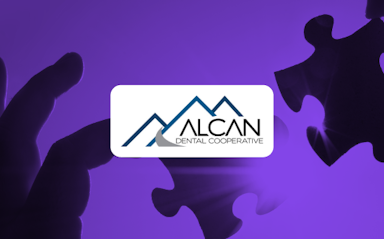The Do’s & Dont’s for Effective Patient Communication
Compassionate communication with patients should be considered as part of the cure and plays an important role in practice success.
With dental anxiety being one of the top reasons impacting dental visitations, excellent patient communication becomes crucial.
Establishing good, clear, and structured communication with patients is vital for proper diagnosis, effective treatments, and quality care for your patients.
Patient Communication: What to Avoid
Ignoring Your Patients: Front Office & Clinical Staff Conduct
Poor staff conduct can make a patient confused and emotionally stressed when they leave your practice. While front office systems mark the first interaction the patients have with your practice, clinical operations cover everything that falls between the initial consult and diagnosis to case acceptance. Together, these critical practice systems form the core of your patient experience.
Inherently, multitasking is unavoidable for both of these systems. The front desk handles activities that range from answering phone calls, resolving queries, handling new patients, verifying insurance, and managing registrations to scheduling appointments, follow-ups for confirmations, and rolling out appointment reminders. Clinical operations handle patient transitions through diagnosis, consultations, plan presentations, and addressing patient concerns regarding treatments.
It must be consciously ensured while juggling multiple tasks that your patients are never ignored. While nobody does this on purpose, it is an unfortunate and critical outcome that starts to creep slowly into your practice culture. This normally happens when a practice prioritizes efficiency over patient comfort and is a trait that needs to be watched out for and avoided.
Patient feedback is a luxury. Not all patients provide you with inputs on staff conduct and care experience. They leave and move on to the next practice.
Negative Work Culture
Negative communication includes both verbal & non-verbal communication. The rolling of the eyes, an aggressive tone of voice, and the sigh when answering a question, are cues that reflect your attitude. These are strong indicators for which patients remain alert to judge the quality of practice. A negative attitude affects both patients and internal staff alike.
Another ‘must avoid’ is second-guessing decisions made by doctors in front of patients. It’s important to have an honest and open communication culture, but not at the cost of undermining the credibility of the dentist in the eyes of the patient.
The next item on the not-to-do list is office gossip. It is a healthy practice to discourage gossip. While this may seem like a good way to keep things jovial at the workplace, it can soon turn toxic and take over the work culture. Moreover, patients can quickly pick up the vibe of the office, and gossiping impacts how patients start viewing your practice.
Professionalism & Confidence: Stop Using ‘No’ and ‘Maybe’
Professionalism and patient care rank among the top two parameters considered by patients when they choose a practice. Patients are already anxious about dental procedures and their associated costs when they turn up.
Your patients want to entrust their oral health in the hands of confident professionals who know what they are about. There is no way patients can judge the quality of treatment other than relying on physical cues and the attitude, conduct, and professionalism of your staff. It is important that your staff understands this.
Avoid using ‘Maybe’ and ‘No’ when interacting with your patients, be it while discussing treatments, greeting them at the front desk, or how you address patient queries. Instances where your employees are unaware of how to address certain queries, especially in the case of benefits coverage, need to be handled with skill and confidence. This is when your call scripts, mock drills, and training pay off.
Don’t Use Jargon
A typical patient remembers less than half of what their doctor tells them, especially when communicating treatment procedures. Try to avoid technical terms and industry jargon. The objective of patient communication is to express (and invite participation) rather than impress (and shut patients down).
You need to be aware of the fact that people don’t usually acknowledge something that they don’t understand. This holds true when explaining treatment plans to your patient, who hesitates to ask questions. The last thing you want is your patients to zone out and drag their feet during case acceptance.
Avoid Surprises When You Discuss Money
Oral health is your number one priority when treating patients. On the other hand, this might not always be your patient’s first priority. While medical health is normally considered a top priority for dental procedures, your patients might consider their finances first.
This is when patients opt for quick fixes or delay procedures to cut down on their out-of-pocket costs. In such a context, patients deeply resent last-minute surprises in payments and the scope of benefits covered.
Clarity and honesty on the cost of services are an integral part of the patient experience in dentistry. When communication of costs is carried out half-heartedly or without the proper attention it deserves, you lose credibility in the eyes of your patient. Once this happens, they start second-guessing all the previous and future treatments you recommend.
The Best Approach For Effective Patient Communications
Acing the Emotional Quotient: Listen, Empathize, Solve, Repeat!
Fostering loyalty in your patients and standing out from your competition requires more than competent dental care. Lasting relationships are built based on the value you provide to your patients. For a practice, this means going beyond competent care to embrace the emotional quotient of human needs. When your patients start seeing you as their personal oral-health guardian rather than just a dentist among many, you establish a strong foundation built on trust.
Your employees need to understand this distinction. A practice is not just an outlet to sell services to consumers. The primary priority of your practice is patient health, and success is just the natural consequence of this focus. To achieve one, you must focus on the other. For this, you need to listen to your patient, have empathy and provide solutions to their problems.
When you listen to your patients, it shows your depth of interest to solve their problems. Respect is nothing but paying attention. Listening connects a bridge of empathy with your patient that lets you go above and beyond conversation scripts to build lasting relationships.
Solving patient problems is a skill set that needs to be honed with consistency. Your passion for dentistry will get you started, but you need skill for the endurance required for practice success. This is where investing in continual improvement initiatives and training pays dividends for yourself and your staff.
Communicate in Layman Terms: Before, During, And After Treatments
Using jargon and medical terms is a poor approach to patient communication. It is vital that you build a narrative that is relatable to the layman. For instance, ‘carious lesions’ can be better expressed as ‘cavities,’ ‘periapical radiolucencies’ in a patient x-ray can be better described as a ‘puss pocket’ in their bones, and ‘periodontal treatment’ becomes ‘gum disease.’
At the operatory, don’t seat the patient and then leave without an explanation. Acknowledge the patient, and if they are in the mood, walk them through the preparations being made. It’s beneficial to communicate the ‘what’ and the ‘why’ of the procedure while at the operatory. Check in with the patient frequently during the procedure and initiate efforts to make them feel at ease.
Immediately after the procedure is complete, make sure that you communicate what has been done and discuss the next steps. Personally escort your patient out of the operatory while making sure that you let them voice their concerns and provide expert counseling to assuage their fears.
Leveraging Technology
From using visual aids to explain complex treatment procedures to the type of equipment used, managing schedules, practice administration, and patient communication, technology amplifies the quality of your patient communication and interaction. Practice management software (PMS) is a great investment that aids patient communication processes at a practice.
CareStack helps you roll out a structured communication framework that provides a convenient pre-visit process, seamless check-ins during visits, and ongoing post-visit patient engagement. CareStack features solutions such as easy-to-use online scheduling and forms, appointment reminders, custom campaigns, automatic curbside check-ins, detailed breakdown of benefits, and patient payments via text and makes collecting patient reviews a breeze for both patients and the practice.
The relevance of excellent patient communication is often downplayed and is considered an add-on to dental treatments. But from a patient’s perspective, communication holds equal importance, if not more. Effective patient communication builds stronger customer relationships, develops customer loyalty, generates referrals, boosts patient volumes, and improves the reputation of your dental practice.





